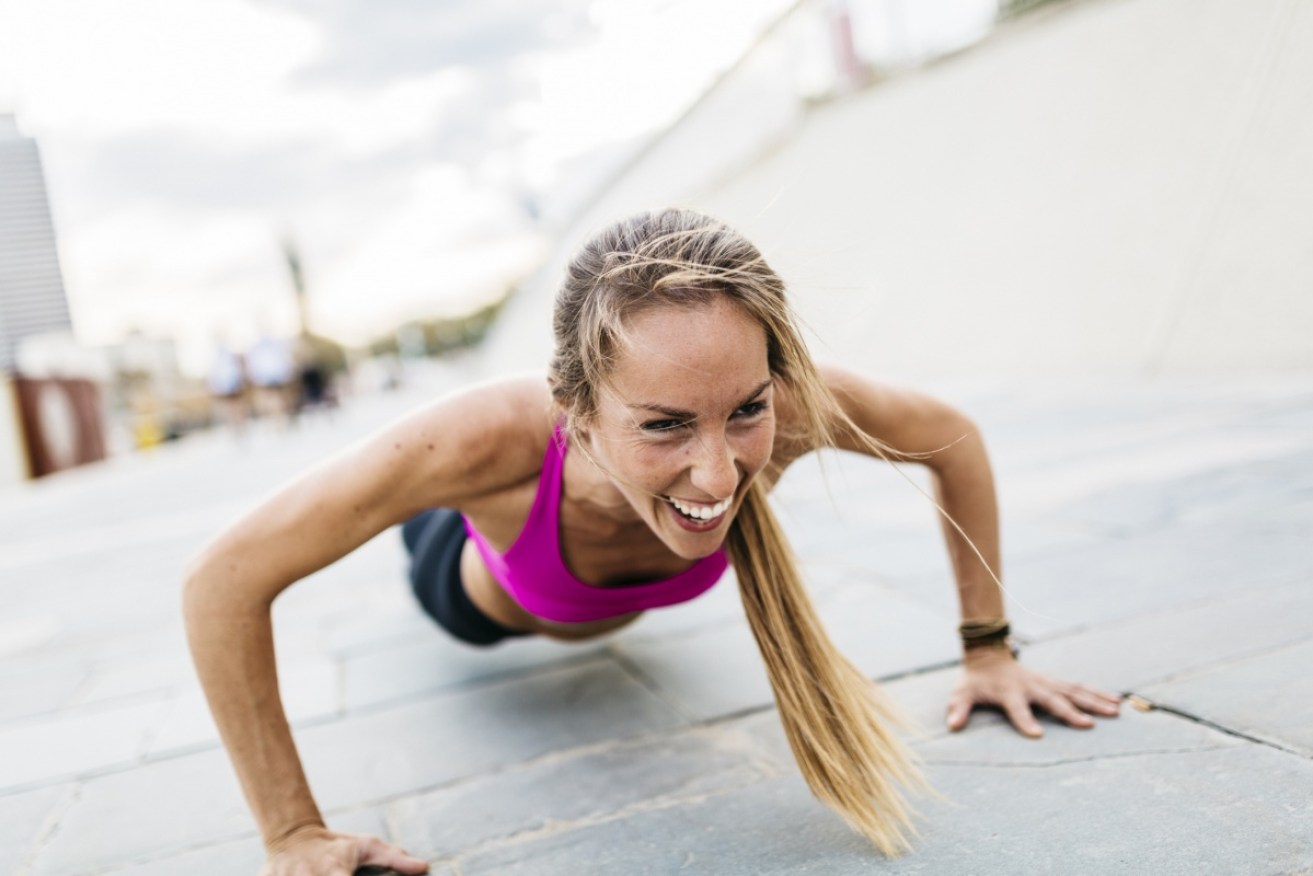Strength training at any age


Strength training at any age is important for quality of life. Photo: Getty
Gone is the archaic belief that strength training makes you big and bulky.
In fact, whether you’re a gym junkie or a desk jockey, strength training offers much more than building muscle. And unlike other fads, research is proving that strong not skinny is essential for better health.
Unique health benefits
Last month, an observational study by The University of Sydney involving 80,000 adults found that people who did strength-based exercises had a 23 per cent lower risk of early death, and a 31 per cent reduction in cancer-related death.
The World Health Organisation (WHO) recommends muscle-strengthening activities involving all your major muscle groups, including legs, hips, back, abdomen and arms, at least twice a week.
Closer to home, Australia’s physical activity guidelines for 18 to 64-year-olds also point to strength training two days a week, alongside aerobic exercise.
Yet, some reports suggest less than one in five Australians meet the recommended amount of strength-based exercise each week.
Yujin Lim, an accredited exercise physiologist at Optimal Health Exercise Physiology, says strength training at any age is important for quality of life as well as the treatment and prevention of disease and injuries.
“As your muscles, joints, tendons and ligaments get stronger, your body becomes more resilient,” he says.
“This greatly reduces injury risk for everything from going for a jog, to moving furniture, playing sport and even repetitive typing at your office desk.”
For young and old
The type of strength training and health benefits depend on various factors, including a person’s age and fitness level.
“In your 20s, hormones that facilitate muscle growth, such as testosterone, are naturally at their highest levels. This makes it easier to build and maintain muscle mass,” Lim says.
“After the age of 30, the rate of bone loss in your body exceeds the rate of new bone formation. People who are inactive can lose as much as 5 per cent of their muscle mass per decade after turning 30.”
Meanwhile, if you’re 50 or over, the incidence of many chronic diseases such as diabetes, obesity, arthritis and osteoporosis significantly increases, but strength training can prevent or manage disease progression.
Getting started: The best exercises for your age group

Photo: Optimal Health Exercise Physiology
20s-30s
Push-ups: A simple, home-based exercise to help strengthen your arms, chest and core. Start on your knees and gradually build up to your toes for a full push-up.
Single leg Romanian deadlift: Hold a dumbbell in one hand and stand on the opposite leg. Lower your torso then squeeze your glutes and extend your hips to return to standing. This builds muscle and strength through your glutes, hamstrings and lower back.
40s-50s
Bird dog: Kneel on the floor with your knees and feet hip-width apart and your hands directly under your shoulders. Simultaneously stretch one leg back and the opposite arm forward, and then alternate sides. This can be therapeutic for lower back pain, which is prevalent in midlife. It strengthens your entire back and core, including the stabilising muscles of your spine.

Photo: Optimal Health Exercise Physiology
Seated row: Using a low pulley row machine, extend your arms until your torso is 90 degrees from your legs. Keeping your torso stationary, pull the handles back towards your torso and repeat. This offers high value movement that helps correct the typical hunched-back and rounded-shoulder posture from decades of desk-based work. It also strengthens your upper back and arm muscles.
60+
Sit-to-stand: This offers real life carry-over to functional independence, plus weight bearing to increase bone density for key fracture sites such as your hips and spine. There is less stress on your knees than in a traditional squat.

Photo: Optimal Health Exercise Physiology
Step up: This has the added stability challenge of working one leg at a time to help prevent falls. The exercise also strengthens your hips and legs.
How many reps and sets?
For beginners, two to three sets of 8-12 repetitions with two to three minutes’ rest, and gradually build your way up.
Importantly, always consult with a health professional such as your doctor, exercise physiologist, physiotherapist or registered exercise professional before you start any new fitness program.
Strength-based exercises and images supplied by Optimal Health Exercise Physiology.








